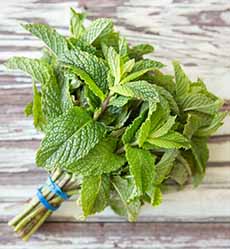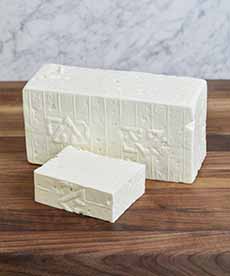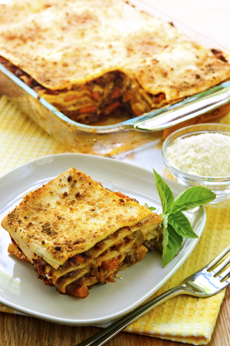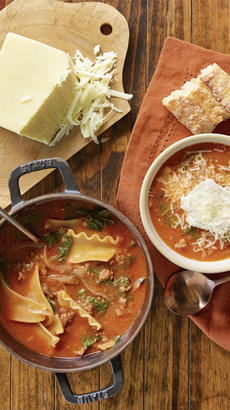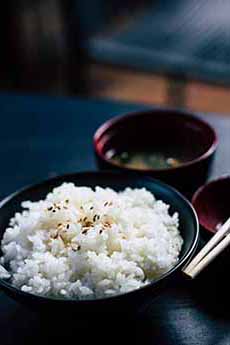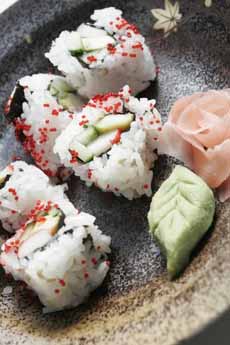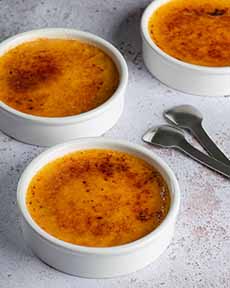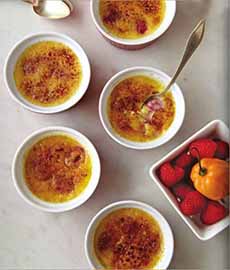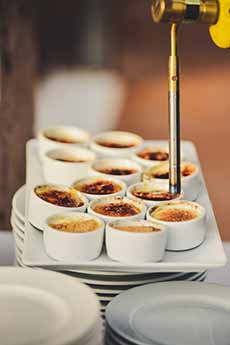|
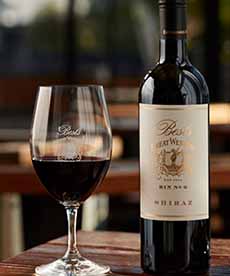
[1] Shiraz wines have a deep red color. Learn more about Australian Shiraz, the first “modern” Shiraz (photo © Best Wines)
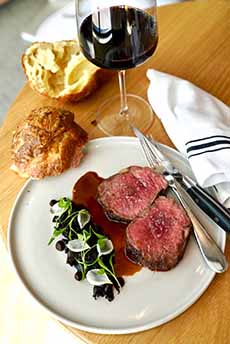
[2] Shiraz is a happy pairig with any kind of beef or lamb (phot © LT Bar & Grill).
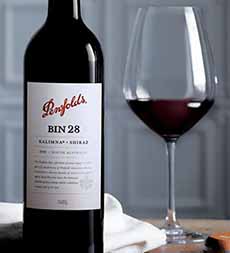
[3 Penfolds Bin 28 from Australia, one of the world’s great Shiraz wines. Here’s more about it (photo © Dmarge).
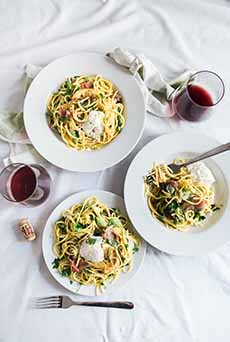
[4] Shiraz stands up to garlic, spice, and robust flavors—including pepperoni pizza (photo © Brooke Lark | Unsplash).
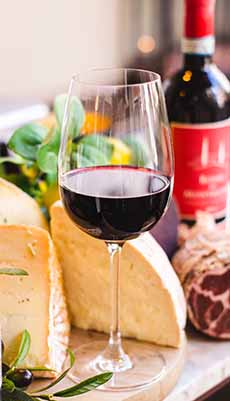
[5] Shiraz likes hearty cheeses: Cheddar, blue cheese, aged cheeses like Parmigiano-Reggiano, and strong cheeses washed rind cheeses (photo © Louis Hansel | Unsplash).
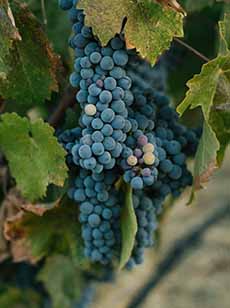
[6] Shiraz grapes (photo © Max Delsid | Unsplash).
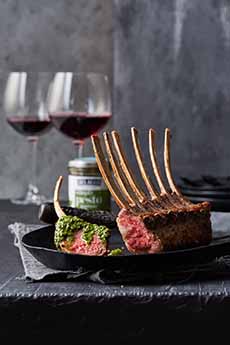
[7] Yes, please: rack of lamb and a bottle of Shiraz (photo © DeLallo).
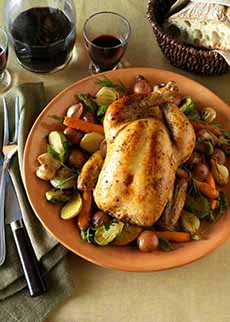
[8] Roasting a chicken? Open a bottle of Shiraz (photo © Corto Olive | Facebook).
|
|
National Shiraz Day is the 4th Thursday of June. It celebrates a wine that is also known as Syrah. The better-known Syrah has its own holiday, International Syrah Day, on February 16th. So what’s the difference of Shiraz vs. Syrah?
Food holidays are an opportunity for THE NIBBLE to discuss a particular food or wine. This article will explain:
Why Syrah is called Shiraz.
Ideal Shiraz food pairings.
The history of Shiraz.
A BRIEF INTRODUCTION
Shiraz/Syrah is a dark-skinned red wine grape variety that is grown around the world.
The modern Shiraz grape is identical to Syrah, which originated in southeast France.
Modern Shiraz has no established connection to the city of Shiraz, Persia (modern Iran), where a wine of that name was made for centuries (but can now no longer be made*).
In addition to the wines called Syrah and Shiraz, the grape itself is widely used as a blending grape in the red wines of many countries. Its fruit flavors balance out the lesser fruitiness of other grapes, resulting in a more complete wine.
Neither Syrah nor Shiraz should be confused with Petite Sirah, a different wine that cross-bred Syrah with another grape‡.
WHY IS SYRAH CALLED SHIRAZ?
In the “why is this so complicated” category, Shiraz wine refers to two different wines. Forget the old, embrace the new.
Historically, the name refers to a wine produced around the city of Shiraz in present-day Iran. By the ninth century, the city had a reputation for producing the finest wine in the world. As mentioned, that wine is no longer made*.
In the 19th century, Shiraz became an alternative name for the Syrah grape (explanation below), which is mostly used in Australia and South Africa.
There is no proven connection between the city of Shiraz and its wines, and the modern-day Shiraz, or Syrah, that is made in Australia, South Africa, and other countries.
The modern Shiraz or Syrah grape, was brought to Australia in 1832 by Scottish horticulturist, James Busby, the father of Australian wine. He brought vine cuttings from varietals in France and Spain that became the foundation of the Australian wine industry.
So why did Syrah become Shiraz in Australia? Yes. No one has uncovered the smoking gun, but here’s what we do know.
Busby did not rename the grape Shiraz. But he labeled his cuttings Scyras and Ciras, which, in a heavy Scottish or Australian accent, could be pronounced somewhat like Syrah or Shiraz.
The earliest Australian documents use the spelling Scyras. It has been speculated by some wine historians that Shiraz is a so-called “strinization” of Syrah via Scyras (strine, also spelled stryne, describes the broad accent of Australian English).
“Shiraz” seems to have replaced “Scyras” in Australia from the mid-19th century [source].
Those who wish to put bets on the mystery of exactly how Syrah became Shiraz should probably look to the “strinization” of Scyras (and wait for the smoking gun).
Ready for more confusion? In different parts of the world, the grape is called Antourenein noir, Balsamina, Candive, Entournerein, Hignin noir, Marsanne noir, Schiras, Sirac, Syra, Syrac, Serine, and Sereine.
THE DIFFERENCE BETWEEN FRENCH SYRAH & AUSTRALIAN SHIRAZ
Any wine (or other agricultural product) will taste different based on its terroir†. Chocolate from beans grown in the Côte d’Ivoire tastes different than chocolate from Venezuela.
After terroir, the next differentiator is style, a reflection of the winemaker’s taste in making the wine.
Let’s start with Syrah from France.
Syrah
The world’s most famous Syrah wines, the classic Northern Rhône reds, are elegant and tannic, with restrained fruit. They tend to be dark, earthy, smokey, and even leathery, reflecting their terroir and cold climate.
Syrah is the main grape of the northern Rhône and produces classic, world-famous wines such as Hermitage, Cornas and Côte-Rôtie.
In the southern Rhône, Syrah is used as a blending grape in such wines as Châteauneuf-du-Pape, Gigondas and Côtes du Rhône (Grenache usually makes up the bulk of the blend).
The finest Rhone wines will age for decades. Some winemakers make less-extracted styles that can be enjoyed young for their lively red and blueberry characters and smooth tannin structure.
Syrah wines made in the French style, from grapes grown in other cooler climates, tend to use the Syrah names.
Shiraz
Beyond Australia, Shiraz has become a preferred name for the wines produced by New World winemakers, who fashioned their wines in the Australian style. It’s a stylistic choice—plus the qualities provided by their terroir—to vinify their wines in a separate way from French Syrah.
(It may be confusing to the consumer, but if you’ve ever wondered how Shiraz is different from Syrah, here you have it!.)
In warmer climates, Syrah yields riper berries that create rich, lush, intense, fruit-forward wines (often notes of blackberries), and generally bolder wines. These wines are higher in alcohol and less tannic than French Syrah. Accents are peppery rather than smokey [source].
While the best Rhone Syrahs are vinified for aging, Shiraz wines are more approachable when young.
SYRAH FOOD & WINE PAIRINGS
Shiraz wines tend to be full-bodied with big, bold flavors, so they pair easily with big- and bold-flavored food.
Beef (including roast beef, steaks, even burgers)
Cheddar, blue cheese, aged cheeses like Parmigiano-Reggiano, and strong cheeses washed rind cheeses
Grilled and barbecued foods
Lamb chops, roast leg of lamb
Mushroom dishes
Pizza, especially pepperoni
Roast chicken and duck
Sausage
Stews
As with most red wines, avoid pairing Shiraz with lighter foods like seafood and white fish.
THE HISTORY OF SHIRAZ
Syrah has a long documented history in the Rhône region of southeastern France, but for a long time, its origins were unknown. Then came the advent of DNA research.
In 1998, a study conducted in the Department of Viticulture and Enology at University of California, Davis used DNA typing and extensive grape reference material from the viticultural research station in Montpellier, France.
The conclusion: Syrah was the offspring of the grape varieties Dureza (father) and Mondeuse Blanche (mother) [source]. Both parents come from a small area in southeastern France, close to northern Rhône River. Based on these findings, the researchers concluded that Syrah originated in the region of the northern Rhône (southwestern France).
And thence to Australia. It was long thought that Shiraz arrived in Australia in 1832 as French Syrah cuttings that were part of the original James Busby collection.
Busby’s cuttings were planted in the Sydney Botanical Gardens, then the Hunter Valley, before making it to South Australia in the middle of the 19th century.
However, Shiraz may have arrived a bit earlier, as part of the Macarthur collection which arrived in Sydney aboard the Lord Eldon in 1817 [source].
The first commercial Shiraz vineyard was believed to have been planted by George Wyndham, who started planting his vineyard at his property Dalwood in 1831. Shiraz may have been planted in that vineyard, which predated the Busby vines (any newly planted wine vines need a few seasons to propagate before they can make acceptable wines).
As a result of any and all of these situations, Australia now has some of the oldest Shiraz vines in the world [ibid].
|



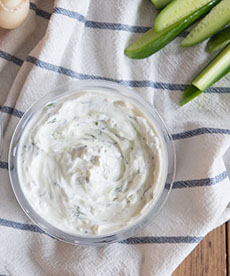 Tzatziki[/caption]
Tzatziki[/caption]
